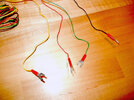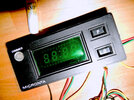Greetings,
After a long period of lurking (and learning by assimilation) I have a concrete question on a trivial matter.
While going through an estate, I found this NOS Radio Shack (Micronta) digital car clock from about 1980 -- it was a state of the art gadget at the time!
My car is just new enough to not need such a device, but in trying to get it to work (no manual) I realized that I had no sure way to tell how to wire it up.
I can guess that the black (fused) wire is ground and the red is power. But there are two more.
Assuming one goes to ignition (?) what is last one for?
I have a 12VDC wall wart, but didn't just want to hook it up and possibly fry it.
Can anyone shed some light on this? Thank you in advance.
After a long period of lurking (and learning by assimilation) I have a concrete question on a trivial matter.
While going through an estate, I found this NOS Radio Shack (Micronta) digital car clock from about 1980 -- it was a state of the art gadget at the time!
My car is just new enough to not need such a device, but in trying to get it to work (no manual) I realized that I had no sure way to tell how to wire it up.
I can guess that the black (fused) wire is ground and the red is power. But there are two more.
Assuming one goes to ignition (?) what is last one for?
I have a 12VDC wall wart, but didn't just want to hook it up and possibly fry it.
Can anyone shed some light on this? Thank you in advance.



